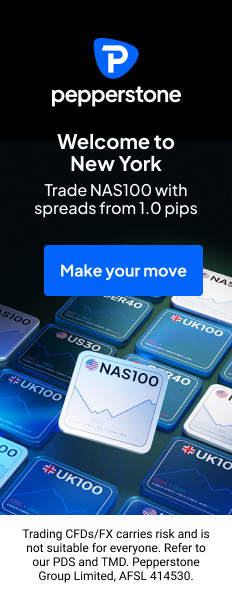The world of investing is on the cusp of a revolution, and it’s driven by a powerful force: tokenization. This innovative technology is transforming how we own and trade assets, moving beyond traditional stocks and bonds into the realm of real-world valuables. Imagine owning a piece of a Picasso, a share in a prime Manhattan building, or even a fraction of a gold bar—all through the secure and transparent world of blockchain.

Tokenization works by creating digital tokens that represent ownership of real-world assets (RWAs) like real estate, art, or even contracts. These tokens unlock a treasure trove of possibilities for investors. Think streamlined trading of traditionally illiquid assets, fractional ownership of high-value collectibles, and easier access to previously restricted investment opportunities.
But the benefits extend far beyond just diversification. Tokenization promises reduced risk, increased efficiency, and the ability to capitalize on previously untapped investment avenues. From art and gaming to securities and real estate, the applications are vast and ever-expanding. This is more than just a new investment trend; it’s a fundamental shift in how we own and value the world around us. So buckle up, because tokenization is poised to reshape the crypto investment landscape, putting the power of ownership directly in your hands.
What is Real-World Tokenization of Assets and their Benefit?
Real-world asset tokenization (often abbreviated as RWAT) is the process of converting ownership of physical or intangible assets into digital tokens on a blockchain. These tokens act as a digital representation of the underlying asset, allowing for a new and innovative way to buy, sell, and manage ownership.
The Real-World Assets (RWAs) are assets that have value outside of the cryptocurrency world. Examples include things like real estate, artwork, commodities (gold, oil), intellectual property, and even financial instruments like bonds or stocks.
The process of tokenization involves creating digital tokens on a blockchain that represent fractional or whole ownership of a real-world asset. These tokens can be easily traded and tracked on the blockchain, similar to how cryptocurrencies operate.
Benefits: Tokenization unlocks several advantages. It can:
- Increase Efficiency: Fractional ownership allows for easier and faster trading of traditionally illiquid assets like real estate or expensive artwork.
- Improved Accessibility: Investors can gain exposure to previously inaccessible asset classes with smaller investments.
Enhance Transparency: Blockchain technology provides a secure and transparent record of ownership, reducing the risk of fraud. - Open New Investment Opportunities: Tokenization opens doors for alternative investments, allowing for greater portfolio diversification.
Overall, real-world asset tokenization represents a significant shift in how we own and invest in assets. It has the potential to revolutionize traditional finance by leveraging the power of blockchain technology.
BlackRock Goes On-Chain: A Tokenization Case Study
World’s biggest asset manager, BlackRock, launches BUIDL: a $5 million minimum investment fund offering instant access to US treasuries, cash, and repos via tokens on the Ethereum blockchain. BUIDL boasts SEC compliance, stable $1 token value, and monthly dividends. Strategic partnerships with Securitize, Coinbase, and security firms ensure a robust infrastructure.
BUIDL’s success, attracting $245 million in its first week, triggered a surge in RWA tokens across the crypto market, highlighting BlackRock’s influence and paving the way for wider adoption.

Some Crypto Projects Tokenizing Real-World Assets
Here are some cryptocurrency projects engaged in Real-World Asset Tokenization: Polymesh (POLYX), Ondo (ONDO), Realio Network (RIO), Landshare (LAND).
Polymesh (POLYX)
Polymesh, a security token-focused blockchain, caters to hesitant institutions with Polymesh Private. This private network allows banks to experiment with RWA tokenization in a controlled environment, offering a seamless transition to the public Polymesh blockchain whenever they’re comfortable (or stay private indefinitely). With BUIDL’s success highlighting the RWA boom, Polymesh positions itself as the training ground for banks entering the tokenized future.
Ondo (ONDO)
In April 2024, Ondo Finance unveiled a strategic partnership with Noble, a leading asset-issuance chain. This collaboration aims to introduce tokenized US treasury offerings to the Cosmos blockchain ecosystem, expanding Ondo’s reach across more than 90 blockchains. As a major player in the tokenized treasury market, Ondo has amassed over $300 million in deposits since its inception in 2023. This partnership with Noble positions Ondo for significant global growth opportunities.
Realio Network (RIO)
Founded in 2018, Realio Network cuts the middleman in real estate. Their open DeFi marketplace leverages blockchain to make property investment accessible. Imagine owning a slice of a beachfront villa – fractional ownership on Realio makes it possible. This innovative approach positions Realio to revolutionize the industry, with CoinCodex predicting a 225% price surge by May’s end.
Landshare (LAND)
Landshare brings real estate investing to the masses with its $1+ minimums on Binance Smart Chain. Just like Realio, Landshare offers fractional ownership through tokens, making real estate accessible without the usual hurdles. This innovative platform is poised to be a major player in RWA tokenization, fueled by a 450% price surge after BUIDL’s launch.
The Benefit of RWA Tokenization to Crypto
Tokenization could be the secret sauce for crypto’s next bull run. By bringing trillions in real-world assets on-chain, it injects liquidity, transparency, and accessibility—all investor catnip. Experts predict a $10 trillion RWA tokenized market by 2030, potentially fueling a crypto boom of epic proportions.
Learn from market wizards: Books to take your trading to the next level.


 Hot Features
Hot Features












